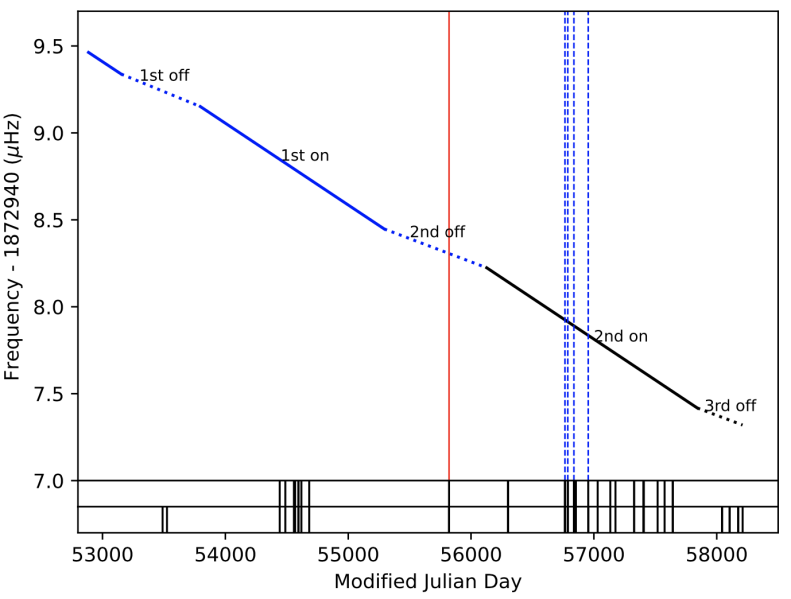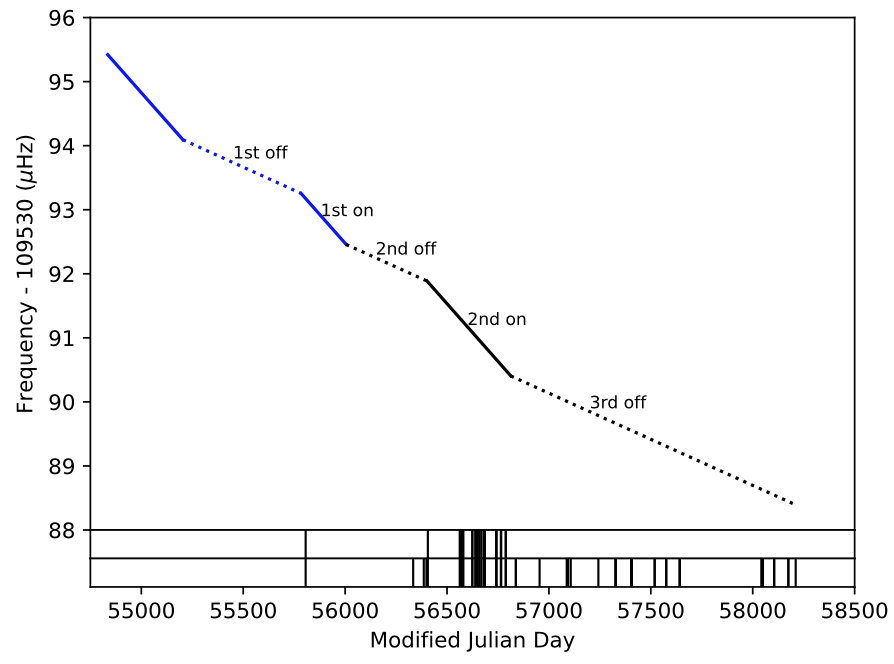Radio pulsars are fast rotating and highly magnetized neutron stars that generate beams of radio emission. The radio emission from some pulsars varies significantly on various timescales. Backer(1970) reported the phenomenon of pulse nulling, in which the pulsed emission ceases suddenly and then remains off for timescales of several pulse periods to hours or even days. Intermittent pulsars present similar behavior, but have much longer on or off timescales, which can last between several days to years. Long-term observations of intermittent pulsars provide valuable insight in determining the cause of the variability.
We present long-term observations of two intermittent pulsars, PSRs J1832+0029 and J1841-0500, using the Parkes 64 m radio telescope. The radio emission for these pulsars switches off for year-long duration. Our new observations have enabled us to improve the determination of the on–off timescales and the spin-down rates during those emission states. In general,our results agree with previous studies of these pulsars, but we now have significantly longer data spans (see Figures 1 and 2). We have identified two unexpected signatures in the data. Weak emission was detected in a single observation of PSR J1832+0029 during an off emission state. For PSR J1841-0500, we identified a quasi-periodic fluctuation in the intensities of the detectable single pulses, with a modulation period between 21 and 36 pulse periods. Our results provide more stringent constraints on theory models. The results have been published on the Astrophysical Journal(ApJ,2020, 897, 8).

Figure 1. Upper panel: pulse frequency vs. MJD for PSR J1832+0029. The solid lines represent the pulse frequency determined phase connected timing solutions. The dotted lines are the extrapolated pulse frequency when the pulsar was not detected. The data points for the solid blue lines were obtained from Lorimer et al. (2012). The vertical lines are described in the text. The lower panel is split in two. In the top the MJDs of the 37 observations in which the pulsar was detected are shown. The bottom shows the MJDs for all of our observations of this pulsar.
